Emotional States Lesson Plan

Lesson Plan Mindmap for Emotional States ” Click to Enlarge
CLICK ICONS TO JUMP DIRECTLY TO EACH SUBJECT ON THIS PAGE








EMOTIONAL STATES LESSON PLAN
This page is a free-shared lesson plan archive for teaching all educational subjects within the context and theme of “Emotional States”. It is purposed for use in community education environments, homeschool environments, traditional schooling environments, or as a supplemental and fun addition to any education program. As part of the complete Education for Life Program, this lesson plan is specifically designed to work in conjunction with the other components: Foundations of Teaching, Curriculum, Teaching Strategies, Learning Tools and Toys, Evaluation Model, and The Ultimate Classroom. If you’d like to learn how all these components work together, click here. Click here for the specifics focused on just using the lesson plans:
CLICK HERE FOR A DETAILED TUTORIAL ON HOW TO USE THIS LESSON PLAN
NOTE: The colors are provided as a possible linear progression (red/easiest to violet/most challenging) for people that might prefer a more linear structure. Our core philosophy, however, is that through creativity every color can be made easy or challenging for any learning level.
RELATED PAGES (mouse-over for descriptions and click for complete pages)
EDUCATION OVERVIEW | HOW TO USE THIS COMPONENT | OUR OPEN SOURCE PURPOSE



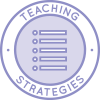
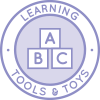
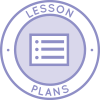
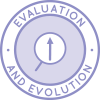



WAYS TO CONTRIBUTE TO EVOLVING THIS EDUCATION PROGRAM WITH US
SUGGESTIONS | CONSULTING | MEMBERSHIP | OTHER OPTIONS
A NOTE ABOUT ALL ONE COMMUNITY LESSON PLANS
The One Community lesson plans are intentionally designed for use in ANY educational environment and with ALL educational, cultural, religious/spiritual, and philosophical approaches to teaching and learning. They are designed without an ideological approach and specifically so they can be adapted to include the views, preferences, methodologies, and/or ideologies preferred by different parents and teachers.
For maximum flexibility and adaptation, they are also designed to be combined to teach multiple subjects at the same time. Doing this increases the creativity, effectiveness, and fun of your learning environment. Once we are on the property and operating our version of the complete school and Education for Life program, we will be adding video examples of how to combine the lessons. In the meantime, visit the Teaching Strategies page for a list of suggestions.
ARTS AND TRADES
CLICK HERE FOR THE COMPLETE SUBJECT OUTLINE FOR ARTS & TRADES
 | TEACHING ARTS AND TRADES WITHIN THE CONTEXT OF EMOTIONAL STATES |

| The Arts- Create your own feelings plate* of 10 emotions(using a feelings template like the one described by Robert Plutchik’s Wheel of Emotions or another type you find). Talk about the times when you feel these emotions.
- Look at a representation of of how feelings relate to each other. Then choose three pairs of opposite emotions and use them to create an emotions diorama* that reflects how these emotions are different.
- Choose at least two emotional states, and create* a photograph, drawing performance art piece or song for each one of these. If possible, show them to others, and start a discussion on emotions.
- Create a ceramic piece, painting, hairstyle, or meal* that shows at least six emotions of your choice.
- Create a mosaic, quilt, piece of metal work, or song* celebrating the whole range of emotions, from basic emotions to complex ones (using Robert Plutchik’s Wheel of Emotions or another reference).
- Using your art medium of choice*, express how you are feeling at this very moment. Do this again when you are feeling differently, and compare the two pieces.
- Create* a set of plush toys, ceramic figures or puppets, and design a program using these to teach children about emotions, how to deal with one’s emotions and how to express them.
|

| Trades- Think of different materials and how they feel (e.g. wool versus glass). Think of five different emotions and which materials you would use to describe them. Create a visual presentation or display*.
- Create a set of 24 or more cards* for a memory game, based on emotional states. Play the game alone and with others.
- Write a cartoon* about or including the presence of different emotions and then create a short animation*.
- Create a Feel Good Jar* using pottery or any other technique you would like. For a period of time that you set, write down every time you experience a nice emotion and what made you feel this way. At the end of the period, empty the contents and read what you have written on those strips of paper.
- Investigate the link between colors and emotions. Then create a presentation with a display* that shows how this applies to a trade/industry of your choice (e.g. graphic design, branding, tourism, interior design).
- Create a professional-level piece* (such as a set of wood carvings, metal work, etc.) to teach people of all ages about emotions and how to express them in healthy ways.
- Create a designer furniture set or interior decoration plan* for an entire home themed on celebrating the spectrum of human emotions.
|
| CLICK HERE TO EMAIL US IF YOU HAVE AN IDEA TO ADD TO THIS SECTION |
* Please note that anything with an asterisk is just a suggestion. The diversity of options with asterisks are interchangeable and purposed to stimulate your own ideas. Any one of these suggestions could be replaced with a written paper, any form of art project (drawing, painting, music, paper mache, clay, wood, knitting/embroidery, metals, etc. etc.), an experiment, a presentation, a mindmap, a computer program, a web design project, a piece of poetry or a song, an interpretive dance or play, a group project, or anything else. What we feel is most important is that both the Learner and the Teacher agree on an exercise/activity they both feel would be maximally engaging, fun, and effective. If you come up with an idea we haven’t already thought of, please share it with us.
ENGLISH
CLICK HERE FOR THE COMPLETE SUBJECT OUTLINE FOR ENGLISH
Note: Any language can be substituted for English. The subject is listed here as “English” because that is the primary language of most of the people on the team, and the official language of the country we’re building our initial location in.
 | TEACHING ENGLISH WITHIN THE CONTEXT OF EMOTIONAL STATES |

| - Identify* 3 words/sentences that are polite to use when feeling negative emotions, and which ones are not. Share your findings with 3 others and get their ideas for any additional polite ones.
- Create a list* of 10 good listening skills and things you can say/do when others are expressing their emotions.
- What are constructive ways to express emotions? Research this and write a 2 page essay* about what you have learned and ways that you can practice it in real life.
- Read a fictional piece of your choice and write a book report*, briefly summarizing the book and analyzing the characters, focusing on their emotional states, how and why they were in various emotional states, and how they dealt with them.
- Read a piece of classical fiction of your choice, at your own reading level and originating from any culture (in English translation). Write a report* discussing the character’s different emotions, ways of expressing their emotions, the results of the way they reacted to or expressed these emotions and how the outcome may have been different if they had handled or expressed their emotions differently.
- Analyze an historically important speech of your choice, such as Martin Luther King, Jr.’s “I Have a Dream” speech. Write a report* about the rhetorical devices and features used, the emotions they prompted, and how they made the speech memorable. Include research on the four basic types of persuasive speech.
- Research how to respond professionally and constructively to oral and written messages that generally prompt negative emotions (e.g. email that one did not get the job) or convey negative emotions (e.g. customer complaint emails). Create a lesson plan* for an English class on the subject, including a collection of 25+ positive examples you have collected or written yourself, and open source your lesson.
|
| CLICK HERE TO EMAIL US IF YOU HAVE AN IDEA TO ADD TO THIS SECTION |
* Please note that anything with an asterisk is just a suggestion. The diversity of options with asterisks are interchangeable and purposed to stimulate your own ideas. Any one of these suggestions could be replaced with a written paper, any form of art project (drawing, painting, music, paper mache, clay, wood, knitting/embroidery, metals, etc. etc.), an experiment, a presentation, a mindmap, a computer program, a web design project, a piece of poetry or a song, an interpretive dance or play, a group project, or anything else. What we feel is most important is that both the Learner and the Teacher agree on an exercise/activity they both feel would be maximally engaging, fun, and effective. If you come up with an idea we haven’t already thought of, please share it with us.
HEALTH
CLICK HERE FOR THE COMPLETE SUBJECT OUTLINE FOR HEALTH
 | TEACHING HEALTH WITHIN THE CONTEXT OF EMOTIONAL STATES |

| - Learn about what it means to be emotionally healthy. It is important to our emotional health to value ourselves and not depend on others to affirm our value. Create* an affirmation card for yourself using a message such as, “I am valuable”; “I am unique”; “I am loved”; or “My gift is ____.”
- Create a word cloud*. In one color, list some things you are currently doing to contribute to your positive emotional state/ zest for life, and in another color, list some things you want to do next to contribute to this joy of living. (For example, one could join a book club, or visit a museum, art gallery or new place etc.)
- Using the internet or library resources, learn about how physical health and emotional health may be tied together. Then create a list* of five practices related to physical health that are important in having good emotional health, such as a technique for managing stress.
- Studies have concluded that contributing to the lives of others is important for our emotional health. Compile a list* of 25+ ways one can positively impact the lives of others. Implement three or more of these while being mindful of how you are positively affecting others. Write a one page reflection* of your experiences.
- Compile a list of 10 unhealthy mental habits, which lead to poor emotional health. Then for each of these, find at least one way to stop engaging in these habits (i.e. healthy mental habits). For example, negative thoughts about oneself can be stopped by being aware of these thoughts and perhaps creating a list of affirmations for oneself. For two weeks, try these healthy practices and keep a journal* to document what you think and feel.
- Research strategies to help one be aware of, accepting, expressing and managing emotions effectively. Then, for one month, keep a journal* of your emotions and how you are implementing these strategies. Do they work for you? This can be a written journal or typed one, which may include photos, cartoons or artwork.
- Research how to take responsibility for one’s emotions, actions, affect on others, and take initiative in one’s own life. Reflect on your own life, including any ways you may have learned to take responsibility for your life as a young adult. Hold a workshop* for some local young people about personal emotional responsibility and empowerment.
|
| CLICK HERE TO EMAIL US IF YOU HAVE AN IDEA TO ADD TO THIS SECTION |
* Please note that anything with an asterisk is just a suggestion. The diversity of options with asterisks are interchangeable and purposed to stimulate your own ideas. Any one of these suggestions could be replaced with a written paper, any form of art project (drawing, painting, music, paper mache, clay, wood, knitting/embroidery, metals, etc. etc.), an experiment, a presentation, a mindmap, a computer program, a web design project, a piece of poetry or a song, an interpretive dance or play, a group project, or anything else. What we feel is most important is that both the Learner and the Teacher agree on an exercise/activity they both feel would be maximally engaging, fun, and effective. If you come up with an idea we haven’t already thought of, please share it with us.
MATH
CLICK HERE FOR THE COMPLETE SUBJECT OUTLINE FOR MATH
 | TEACHING MATH WITHIN THE CONTEXT OF EMOTIONAL STATES |

| - Learn about emotions represented in a math concept (like the Equation by Chip Conley, that “Disappointment = Expectations ” Reality”). With a mentor, display emotions* as countable objects, such as balls, and shift the balls around to show how to minimize feelings of disappointment. Discuss the experience* with your mentor when complete.
- Looking at an equation such as (Anxiety = Uncertainty x Powerlessness), how can one minimize feelings of anxiety? Explain this mathematically* and prove it by substituting the terms anxiety, uncertainty and powerlessness with numbers. If (Authenticity = Self-Awareness x Courage), how can one increase one’s authenticity? Explain this mathematically* and prove it by substituting the terms authenticity, self-awareness and courage with numbers. (Equations by Chip Conley can be substituted for equations the learner can find.)
- If (Authenticity = Self-Awareness x Courage), how can one increase one’s authenticity? Explain this mathematically by substituting the terms authenticity, self-awareness and courage with numbers (Equation by Chip Conley).
- Create a graph* charting your levels of stress for one day. Label the Y or vertical axis Stress. Label the X or horizontal axis as hour of the day. Make a small note on each hour for why you felt a certain level of stress as a reminder.
- Create a graph* charting your levels of happiness for one day. Label the Y or vertical axis Stress. Label the X or horizontal axis as hour of the day. Make a small note on each hour for why you felt a certain level of happiness, as a reminder.
- Choose two or more emotional states and find some statistics that have been compiled concerning these emotional states (for example: depression- http://www.statisticbrain.com/depression-statistics/). Create 10 different charts* (bar charts, pie charts etc.) to display the statistics.
- Choose one emotional state and find one academic article on that topic which contains findings in the form of statistics. In a 1 to 3 page paper*explain the statistics and how they were determined.
- Choose one emotional state and find one existing mathematical model which tries to explain this emotional state. In a 1 to 3 page paper* explain the mathematics behind this model and how it works.
- Write and open source free share an article* summarizing some existing mathematical models of stress or another emotional state. Insert your own opinion on these models and try to alter an existing model or come up with a new one.
|
| CLICK HERE TO EMAIL US IF YOU HAVE AN IDEA TO ADD TO THIS SECTION |
* Please note that anything with an asterisk is just a suggestion. The diversity of options with asterisks are interchangeable and purposed to stimulate your own ideas. Any one of these suggestions could be replaced with a written paper, any form of art project (drawing, painting, music, paper mache, clay, wood, knitting/embroidery, metals, etc. etc.), an experiment, a presentation, a mindmap, a computer program, a web design project, a piece of poetry or a song, an interpretive dance or play, a group project, or anything else. What we feel is most important is that both the Learner and the Teacher agree on an exercise/activity they both feel would be maximally engaging, fun, and effective. If you come up with an idea we haven’t already thought of, please share it with us.
SCIENCE
CLICK HERE FOR THE COMPLETE SUBJECT OUTLINE FOR SCIENCE
 | TEACHING SCIENCE WITHIN THE CONTEXT OF EMOTIONAL STATES |

| Life Sciences- Choose one type of animal and use the Internet or library resources to find 4 pictures of different emotions that the animal displays. Discuss with a mentor* what emotion you think is displayed in each picture and explain why you think that. (example: dog looks like it is scared because its tail is between its legs and head and eyes are down)
- Learn how heart rates and rhythms change with different emotions. Create a visual display* about these changes and explain them.
- Research how animal and human emotions are similar or different and write a report* on this topic, including how animal and human brains are responsible for these similarities or differences.
- Do research on what is known as the “reptilian brain” and explain the role it plays in emotions. Include in your report* some information about the other areas of the brain, the limbic system and neocortex.
- Label a cross-section of the human brain that illustrates the main areas of the brain responsible for cognition based on visual stimuli and resulting emotions (Thalmus, Amygdala, Visual Cortex). Create a flowchart* to show how certain emotions are produced by each of these areas.
- Learn about neurotransmitters and create a mindmap* to illustrate how dopamine, norepinephrine and serotonin are related to emotions.
- Write a report* about how neurotransmitters work, the relationship between them and the main neurotransmitters thought to be responsible for emotions. Note that neurotransmitters do not only exist in the brain.
- Write a report* about how neurotransmitters in general work and why hungry people sometimes become angry/moody. Note that neurotransmitters do not exist only in the brain.
- Choose an emotional or psychological disorder that has been noted in multiple species and create a visual presentation* that shows the neuro-biological explanation for this disorder, including both medical and possibly alternative treatments.
- Lead a discussion amongst your peers* about the link between one’s heart, brain and gut, especially in terms of emotions. Include implications this may have for the treatment of certain mood disorders.
- Choose a neuroscience or neuro-biology topic from the violet level of life science and write and present a thesis*on this topic related to emotional states.
|

| Physical Sciences- Look at a diagram of the electromagnetic field of the heart that shows how it changes with our emotions. Compare this with diagrams of other electromagnetic fields. Discuss your observations* with a mentor.
- Learn how heat maps work. Then choose four emotions and research which areas of the human body generate heat in response to these emotions, and note any correlations and/or differences you find between those and 2 other types of heat maps. Draw a picture* of your findings.
- Learn about waves and compare brain wave patterns during different mental states (beta, alpha, theta and delta). Using terminology used to discuss waves, in a 2 page paper* with one additional page of 4+ diagrams, discuss how these wave patterns are different.
- Choose 5 neurotransmitter associated with emotional states and explore each of their chemical components. How many atoms of each element are in this neurotransmitter? Using the periodic table, determine the properties of each of these elements. Create a visual presentation* on this.
- Choose one neurotransmitter associated with emotional states and explore its molecular structure. Create a 3-D model* using whatever materials you like.
- Create a presentation* exploring the molecular structure of at least six neurotransmitters associated with emotional states. Use chemical drawing software or create physical 3-D models.
- Explore the link between one or more psychoactive drugs that potentially have psychotherapeutic purposes, such as THC, and neurotransmitters. Create a presentation*, including knowledge of their chemical structures.
- Write an essay* on a topic of your choice related to the intersection between quantum physics and human thoughts and emotions.
- Write an essay* on a topic of your choice related to the chemical structures of psychoactive drugs that potentially have psychotherapeutic purposes and their chemical structures and relationships to neurotransmitters.
|

| Earth Sciences- Atmospheric pressure, especially sudden drops, affects our emotional states. Find out what atmospheric pressure is and draw a picture* to illustrate how it is linked to weather. Then talk about what emotion you might feel in low, medium, and high pressure and why.
- Many people suffer from seasonal affective disorder or “winter blues” as the days get longer. Create a visual display* showing how the position of the sun and the seasons affects how much light we get on Earth, and learn and talk about how that may affect emotions.
- Some people claim the moon cycle affects emotions. Create a visual display showing the moon cycle and how it affects tides on Earth, and learn and type a 1-3 page research paper* about how that may affect emotions.
- Some people claim changes in the level of energy coming from the sun affect human emotions. Create a presentation* explaining what the solar cycle is.
- Some people claim sunspots and solar flares affect human emotions. Write a short report* on sunspots and solar flares, including their categories and how they are produced on the Sun, and what types and amounts are supposed to affect emotions.
- Some people claim that planetary alignments affect human emotions. Write an essay* on the astrophysics of planetary alignment and create a scientific argument for whether you see that theory is either true or untrue.
- Using currently available research, write and post an online article* about how sunspots and solar flares may affect emotional states, and include 3-5 suggestions for how to use this information to create something that could benefit humanity.
|
| CLICK HERE TO EMAIL US IF YOU HAVE AN IDEA TO ADD TO THIS SECTION |
* Please note that anything with an asterisk is just a suggestion. The diversity of options with asterisks are interchangeable and purposed to stimulate your own ideas. Any one of these suggestions could be replaced with a written paper, any form of art project (drawing, painting, music, paper mache, clay, wood, knitting/embroidery, metals, etc. etc.), an experiment, a presentation, a mindmap, a computer program, a web design project, a piece of poetry or a song, an interpretive dance or play, a group project, or anything else. What we feel is most important is that both the Learner and the Teacher agree on an exercise/activity they both feel would be maximally engaging, fun, and effective. If you come up with an idea we haven’t already thought of, please share it with us.
SOCIAL SCIENCES
CLICK HERE FOR THE COMPLETE SUBJECT OUTLINE FOR SOCIAL SCIENCES
 | TEACHING SOCIAL SCIENCES WITHIN THE CONTEXT OF EMOTIONAL STATES |

| Emotional Intelligence (EQ)- Look at pictures of 10+ other people and name the emotions you believe they are feeling. Discuss this* with at least one peer and one mentor.
- Learn about empathy as a part of emotional intelligence and make a list* of 10+ ways to be more empathetic towards others.
- Being able to motivate yourself and energize others is an important part of EQ. Create a short presentation* about how to do this.
- Write a short report* on what Emotional Intelligence (EQ) is and how to develop it. Include information about conflict management.
- Write an essay* related to EQ and skills including negotiation, compromise and consensus-reaching within teams.
- Research and determine which issue in your community or country you feel could be most resolved by an increase in EQ and develop and open source an EQ based strategy* for shifting the issue in a positive direction.
- Write an open source solution-based manual* for increasing emotional intelligence in professional and formal environments.
|

| Foreign Languages
(Each of the following is to be completed in the foreign language(s) being studied)- Learn 5 or more words for different emotional states.
- Learn to express one’s emotional states, both in writing and verbally.
- Create a comic strip* which involves characters’ talking about emotional states.
- Create a poem or article* which involves characters’ talking about emotional states.
- Compose a short story* in which various characters exhibit complex emotional states, mixed feelings etc.
- Write a report* about how emotional states are expressed similarly or differently in the culture that uses your foreign language. Include what would be acceptable in your culture but rude in this other culture and vice versa.
- Write an essay* about an aspect of emotional states that interests you, using mainly literature in your foreign language as references.
|
| CLICK HERE TO EMAIL US IF YOU HAVE AN IDEA TO ADD TO THIS SECTION |
* Please note that anything with an asterisk is just a suggestion. The diversity of options with asterisks are interchangeable and purposed to stimulate your own ideas. Any one of these suggestions could be replaced with a written paper, any form of art project (drawing, painting, music, paper mache, clay, wood, knitting/embroidery, metals, etc. etc.), an experiment, a presentation, a mindmap, a computer program, a web design project, a piece of poetry or a song, an interpretive dance or play, a group project, or anything else. What we feel is most important is that both the Learner and the Teacher agree on an exercise/activity they both feel would be maximally engaging, fun, and effective. If you come up with an idea we haven’t already thought of, please share it with us.
TECHNOLOGY AND INNOVATION
CLICK HERE FOR THE COMPLETE SUBJECT OUTLINE FOR TECHNOLOGY AND INNOVATION
 | TEACHING TECHNOLOGY & INNOVATION WITHIN THE CONTEXT OF EMOTIONAL STATES |

| Technology- Find an app or website that helps one deal with negative emotional states, such as stress or anger. Try it out and see if it works. Discuss* your experience with family members.
- Research and learn about a technology or device that is meant to help relieve stress, and how it should work. Create a picture* that shows this.
- Learn about social media and polite versus impolite ways to express one’s emotional states there. Create a collage or mind map* that represent this.
- Learn about video and audio creation and design. Create an audiovisual piece* that would help someone when they were stressed or feeling another negative emotional state.
- Write a report* about social interaction systems (such as in person, electronic, social media) and how they affect one’s emotional states.
- Write an essay* about some important developments in technologies that reduce negative emotional states and increase positive ones (e.g. toys, gadgets, household items).
- Research some technologies that promote positive emotional states and decrease negative ones. Then either modify an existing design or design something new* that does that.
|

| Innovation- Create a picture* that shows at least 3 strategies for dealing with other people’s negative emotional states.
- Make a list* of at least 5 strategies you make up for enhancing your own emotional well-being.
- List at least 15+ emotions. List where you feel each in your body and create a lesson plan* to demonstrate body language that is associated with each with the aim of teaching younger children how to recognize emotions in body language.
- Test-taking may be stressful. List at least 5 strategies for taking tests that help minimize stress and anxiety during tests and exams. Put them into practice if possible and write a short reflection* on what you noticed.
- Learn how to use breathing and other centering techniques to handle negative emotional states and create 3-5 of your own new techniques. Try these techniques and document what you notice and how you feel in a reflective journal for at least one week*.
- Write an essay* about stress and anxiety reduction using NLP. Include other negative emotional states if you would like.
- Write a research paper* about the relationships between philanthropy and altruism to one’s emotional well-being, and include a component imagining the effects it may have on the world if more or all people behaved in line with philanthropy and altruism.
- Research NLP and other practices that benefit people’s emotional states. Choose 3 and try to learn more about them in depth and their unique benefits, and create, test, and open source a regime* that integrates all three of them in what you discover to be the most effect way.
|
| CLICK HERE TO EMAIL US IF YOU HAVE AN IDEA TO ADD TO THIS SECTION |
* Please note that anything with an asterisk is just a suggestion. The diversity of options with asterisks are interchangeable and purposed to stimulate your own ideas. Any one of these suggestions could be replaced with a written paper, any form of art project (drawing, painting, music, paper mache, clay, wood, knitting/embroidery, metals, etc. etc.), an experiment, a presentation, a mindmap, a computer program, a web design project, a piece of poetry or a song, an interpretive dance or play, a group project, or anything else. What we feel is most important is that both the Learner and the Teacher agree on an exercise/activity they both feel would be maximally engaging, fun, and effective. If you come up with an idea we haven’t already thought of, please share it with us.
VALUES
CLICK HERE FOR THE COMPLETE SUBJECT OUTLINE FOR VALUES
 | TEACHING VALUES WITHIN THE CONTEXT OF EMOTIONAL STATES |

| - Discuss* with 3 others ways to show you care about someone else when they are exhibiting negative emotional states.
- Sometimes other people exhibit negative emotional states during an argument. How could you politely express your feelings in a constructive manner? Write at least 5 phrases you could use*.
- Create a list* of 20+ emotions, and then create two actions for each, one action in each of two categories in relation to whether the action is “in” or “out” of alignment with your values. Then write 1-3 sentences* for each emotion to explain why you placed each action where you did.
- Write a short report* about emotional dependency versus emotional responsibility.
- Learn about the emotional guidance scale and develop a way in which you could use this in a way you feel is valuable. Then teach a lesson plan* to others which is designed to teach them how they can use it.
- Write a short report* about persuasion versus emotional manipulation. Include strategies for persuading with emotionally manipulating them.
- Learn about how to protect yourself from other people’s negative emotional states and intrusion on your boundaries. Write a reflective piece about this and valuing/respecting your own boundaries*.
- Learn about proactiveness and taking control of one’s own life, and how this impacts one’s emotional state. Write a reflective piece about this*.
- Learn about how to manage fear and other negative emotional states and see the things one fears as challenges one can overcome and opportunities for growing and learning. After using these strategies, create a workshop* to teach others the strategies that work for you and others.
|
| CLICK HERE TO EMAIL US IF YOU HAVE AN IDEA TO ADD TO THIS SECTION |
* Please note that anything with an asterisk is just a suggestion. The diversity of options with asterisks are interchangeable and purposed to stimulate your own ideas. Any one of these suggestions could be replaced with a written paper, any form of art project (drawing, painting, music, paper mache, clay, wood, knitting/embroidery, metals, etc. etc.), an experiment, a presentation, a mindmap, a computer program, a web design project, a piece of poetry or a song, an interpretive dance or play, a group project, or anything else. What we feel is most important is that both the Learner and the Teacher agree on an exercise/activity they both feel would be maximally engaging, fun, and effective. If you come up with an idea we haven’t already thought of, please share it with us.
OTHER RESOURCES
We're building a resource section. Click here if you have a suggestion or resource for this page.
OPEN SOURCE SUBJECT RESOURCES (click icons for complete pages)



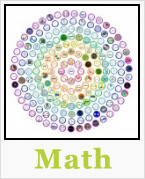



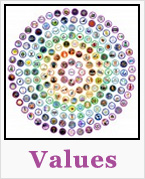
OPEN SOURCE CURRICULUM OUTLINES (click image for summaries and links to complete pages)
CARE
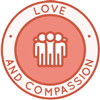



SHARE

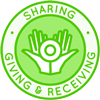


PLAY
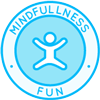
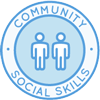
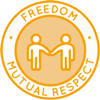

OPEN SOURCE TEACHING METHODOLOGY SUMMARIES
Montessori | Waldorf | Orff | Reggio | Multi-Intelligence | Bloom's Taxonomy | Study Tech | I-WE
INDEX OF ALL THE ONE COMMUNITY OPEN SOURCE LESSON PLANS

Click this image for the Lesson Plans for Life page with links to the rest of the lesson plans
THE WORLD'S LARGEST ONLINE FREE EDUCATION RESOURCE ARCHIVE
RELATED CONTENT AND OTHER RELATED RESOURCES
We're building this resource section. Click here if you have a suggestion or resource for this page.
























 One Community
One Community




